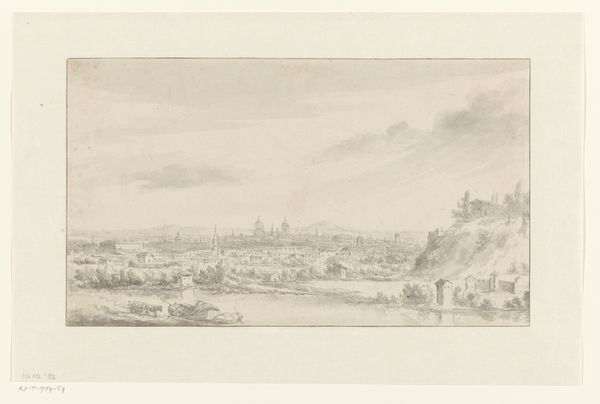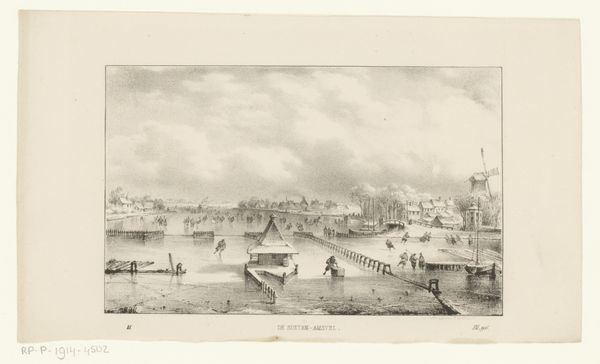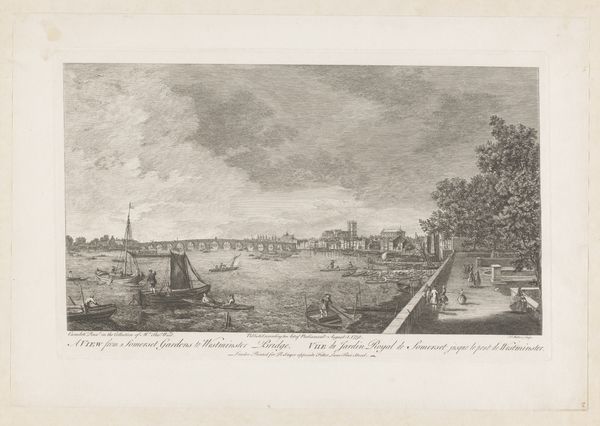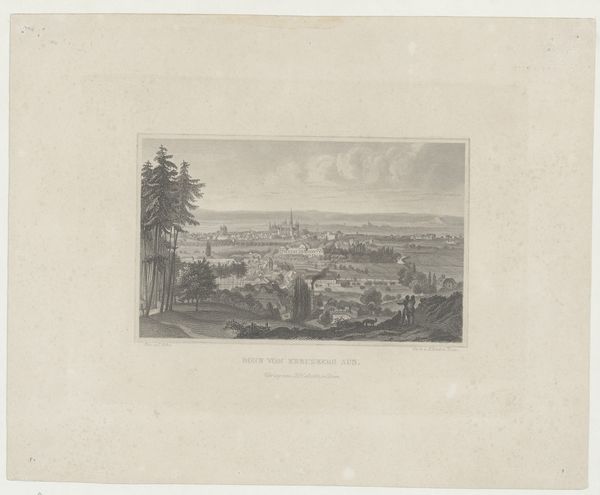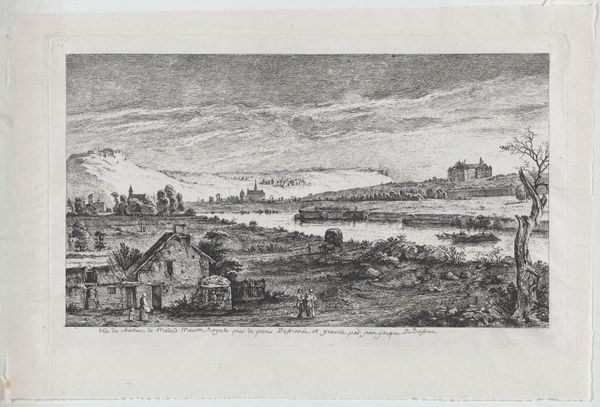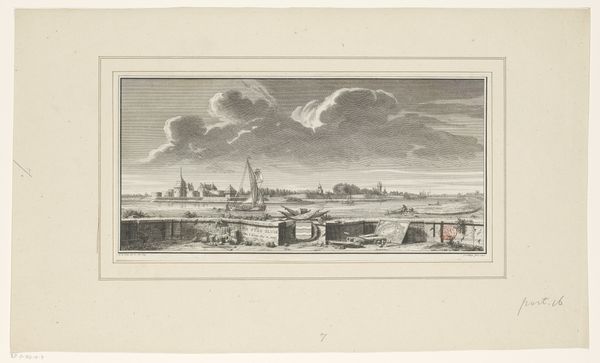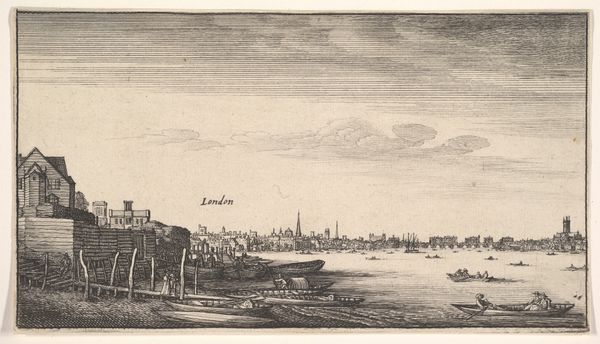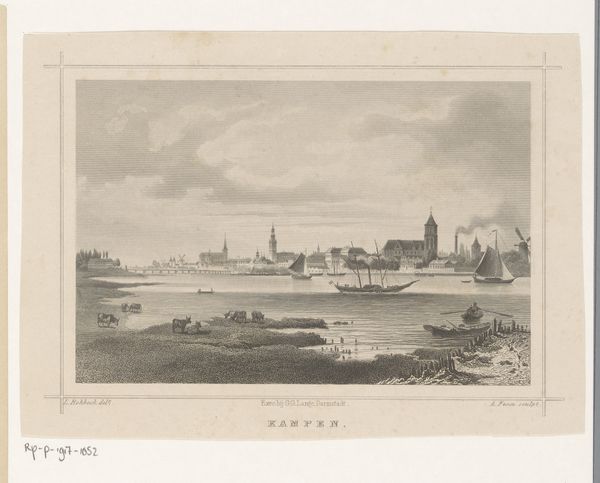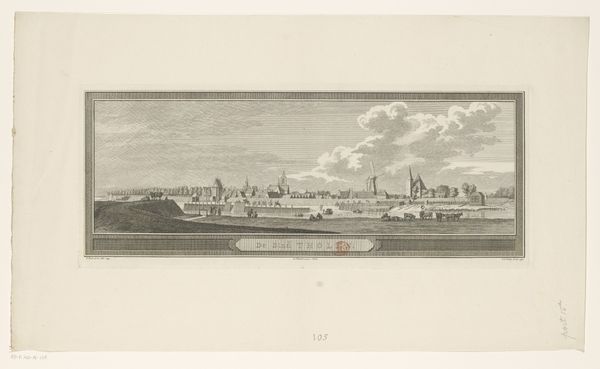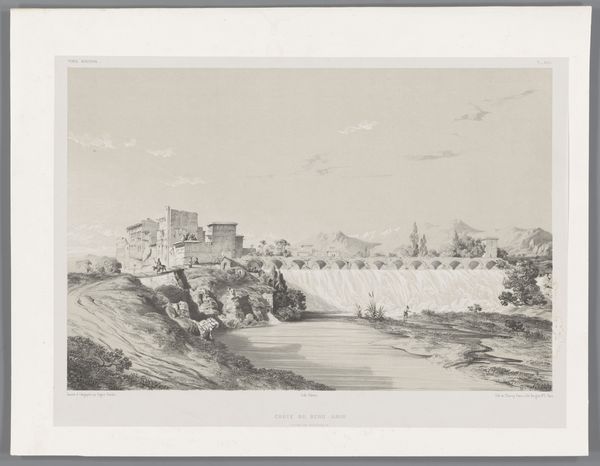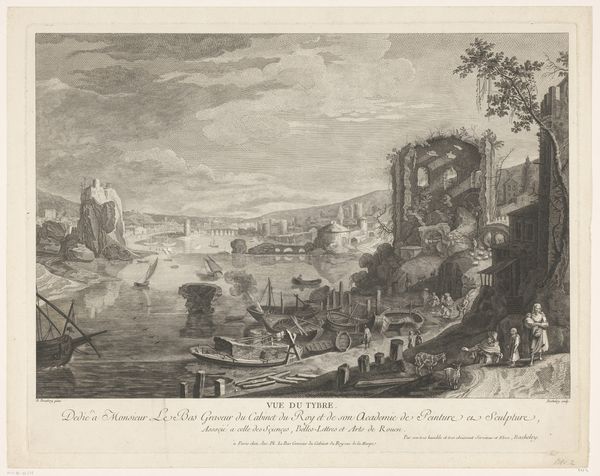
drawing, print, paper, engraving
#
drawing
# print
#
landscape
#
river
#
paper
#
romanticism
#
cityscape
#
engraving
Dimensions: height 302 mm, width 578 mm
Copyright: Rijks Museum: Open Domain
Editor: This is "View of Basel and the Rhine," made sometime between 1817 and 1882 by Johann Gabriel Friedrich Poppel. It's a drawing or print, an engraving on paper, depicting a cityscape. I’m struck by the tranquility, how the artist captured the calm of the water reflecting the bustling city. What stands out to you about this piece? Curator: Considering its materiality, this engraving on paper isn’t just a depiction of Basel. It’s a product of industrial processes – the very means of creating such detailed prints were tied to technological advancements and evolving labor practices. Note the lines created, the method by which the paper itself was manufactured. What implications do you think mass production had on artistic creation during this period? Editor: I guess that being able to produce many copies democratized art somewhat, making images available to a broader audience than just the wealthy elite. But does the shift towards mass production diminish the perceived "value" or "uniqueness" of art? Curator: Precisely. And look closer at the urban landscape represented. This cityscape is intertwined with the economic lifeblood of the river, reflecting how waterways were crucial for trade and transportation, therefore social production. The means of the raw material being there makes it interesting. Editor: That's interesting. I was focused on the aesthetic representation, but you’re drawing my attention to the means of its production and circulation as commentary. Curator: Indeed. Romanticism, traditionally viewed through the lens of individual emotion, here becomes interwoven with considerations of the social forces shaping both the artwork and the city it portrays. Editor: I see what you mean! Thinking about the paper, the printmaking technique, and the river's role really shifts the focus away from just the aesthetic and towards the broader historical and material conditions of its making. Thank you! Curator: A fascinating convergence; materiality always alters interpretation.
Comments
No comments
Be the first to comment and join the conversation on the ultimate creative platform.
